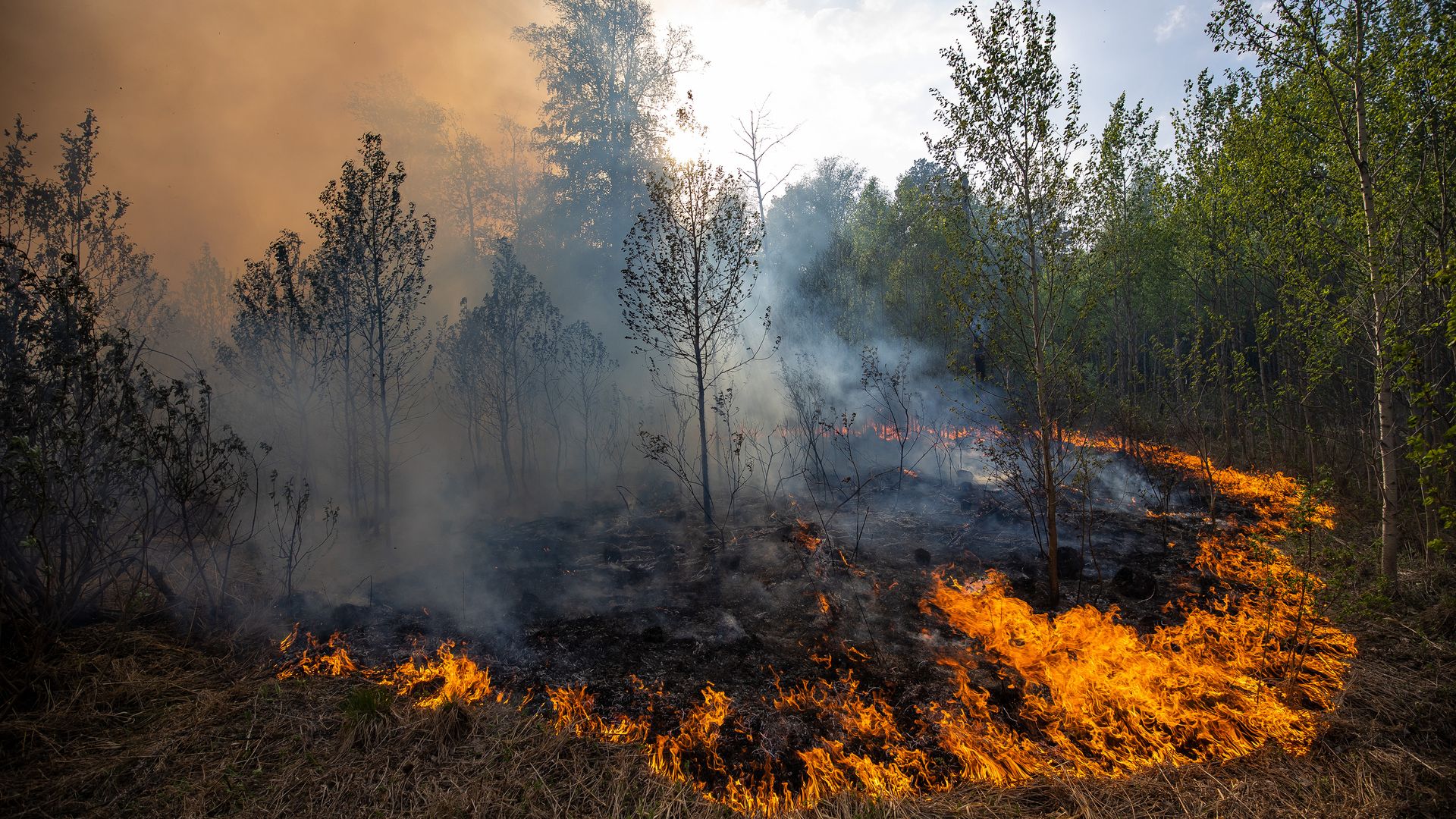"Zombie fires" detected in Alaska and Canada, set to increase as climate warms

- Andrew Freedman, author ofAxios Generate

A wildfire near the village of Vinzili, Russia, on May 18. Photo: Maxim Slutsky\TASS via Getty Images
"Zombie fires" may sound like something straight out of science fiction, but they're a real phenomenon that is likely to become more common in the area ringing the Arctic, and possibly the Arctic itself, as climate change continues, a new study finds.
Why it matters: The study, published in the journal Nature, provides conclusive evidence that zombie or "holdover fires" exist and can be monitored, and it helps to begin to quantify their impact on global climate change.
Context: Zombie fires are blazes that ignite and burn in one season and then smolder through the winter by slowly combusting within peat and other soils, emitting smoke but little or no flames. Then they reemerge during the next spring, erupting into flames once again.
- Numerous zombie fires were reported in Siberia last summer, which featured a particularly severe fire season, and such fires were also anecdotally reported during the summer of 2019, Merritt Turetsky, a University of Colorado professor who studies peat and wildfires, tells Axios. (Turetsky was not involved in the new study.)
- Peat is damp soil that contains decaying plant material, and when burned, it can release large amounts of global warming pollutants.
- Zombie fires have long been discussed in certain corners of the wildfire and climate science communities, but with this study, they've finally been quantified.
- Turetsky describes zombie fires as a "legacy" in the climate, where one fire season can return to "haunt" the following one. "It's like a ghost of last year's fire season continuing to pop up and influence the contemporary season," she said.
How they did it: For the new study, researchers focused on fire activity in two sections of boreal forest, one in Canada's Northwest Territories and another in Alaska. They used an algorithm to detect zombie fires using satellite imagery as well as data from the ground.
What they found: Holdover fires in boreal forests tend to be more prevalent during long, hot summers, which have become more frequent in recent decades. In general, the Arctic is warming at more than twice the rate of the rest of the globe.
- The study finds that between 2002 and 2018, zombie fires (referred to in the study as "overwintering" fires) caused about 1% of the total burned area in the study regions. However, this varied considerably — in some years, such blazes accounted for nearly 40% of the total burned area.
- A key indicator of a zombie fire versus a new ignition, the study concludes, is that new fires tend to start later, when the lightning season commences. In contrast, zombie fires can ignite again as soon as the weather warms up and vegetation begins to dry out.
By the numbers: The researchers found that between 2002 and 2018, zombie fires in Alaska and the Northwest Territories emitted 3.5 million metric tons of carbon. The majority of these emissions occurred in just two fire seasons: 2015 and 2010.
- The study cautions that this may be an underestimate, however, since computer models may not capture well the smoldering phase of these fires.
- The carbon emissions from zombie fires comprise a relatively small amount (0.5%) of the total carbon emissions from fires in Alaska and the Northwest Territories. "Yet this fraction may grow larger with climate warming," the study states.
The big picture: Global warming is already supercharging fire seasons in the Arctic and sub-Arctic, as evidenced by the destructive fire seasons of 2019 and 2020. Some, like Turetsky, are worried recent severe Arctic fire seasons are a sign that climate change is destabilizing ecosystems, with severe fire seasons becoming the norm.
- There are three main factors that help drive zombie fires and that are tied to global warming: summer temperature extremes, large annual fire extents, and fires that burn deeper into the soil.
- Already this spring, fires are erupting in Canada and Siberia, with scientists tracking them, often via Twitter, using satellite imagery, Turetsky said.
What they're saying: The paper underscores the need for governments to start collecting official statistics on holdover fires and early season peat fires, said climate researcher Jessica McCarty of Miami University in Ohio, who was not involved in the study, in an email to Axios.
- "More importantly, this paper gives our first estimates of how much holdover fires may be contributing to annual burned area totals and from there we can better understand emissions," she said.